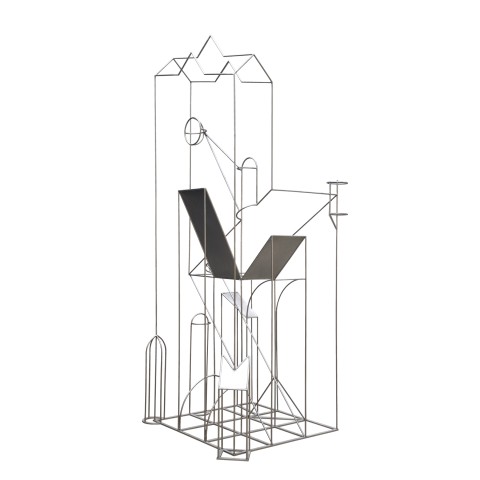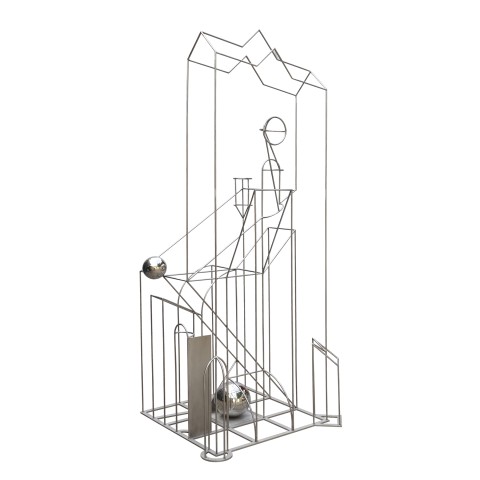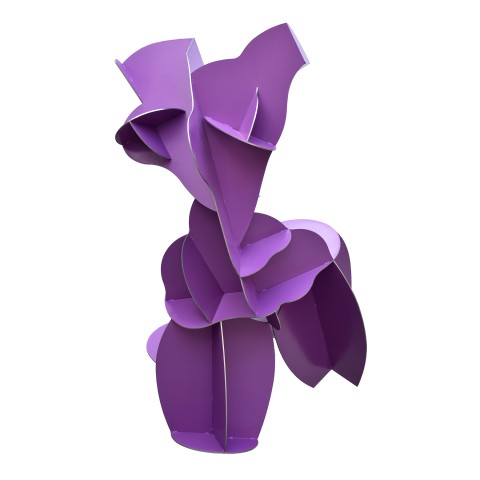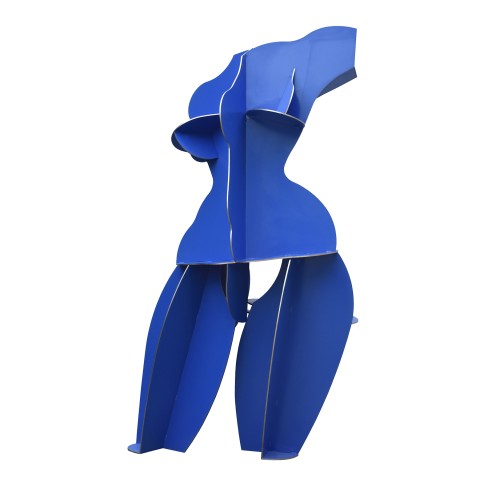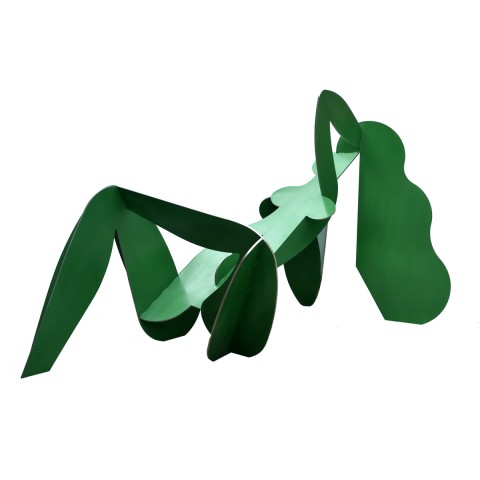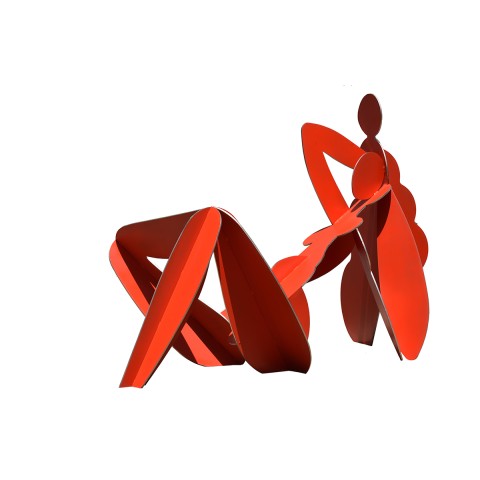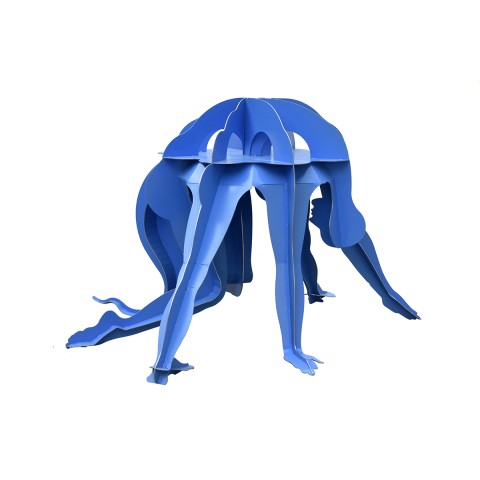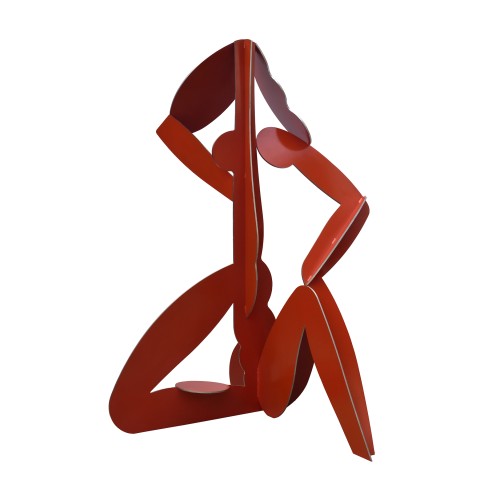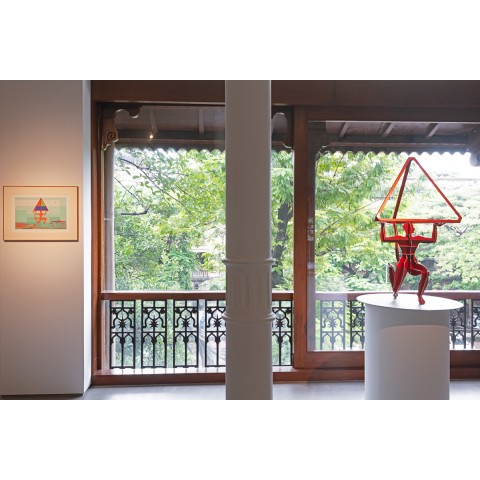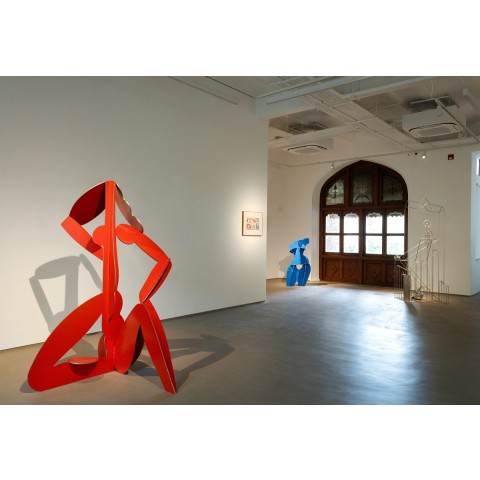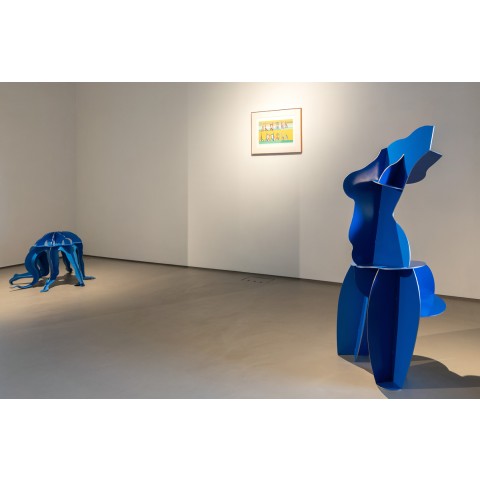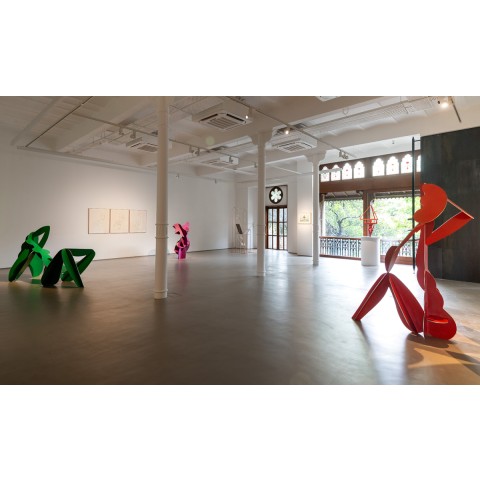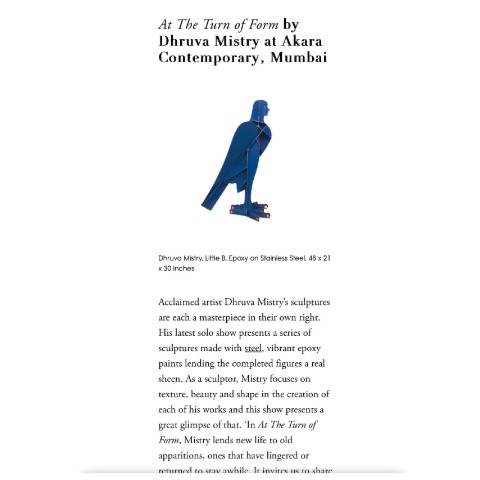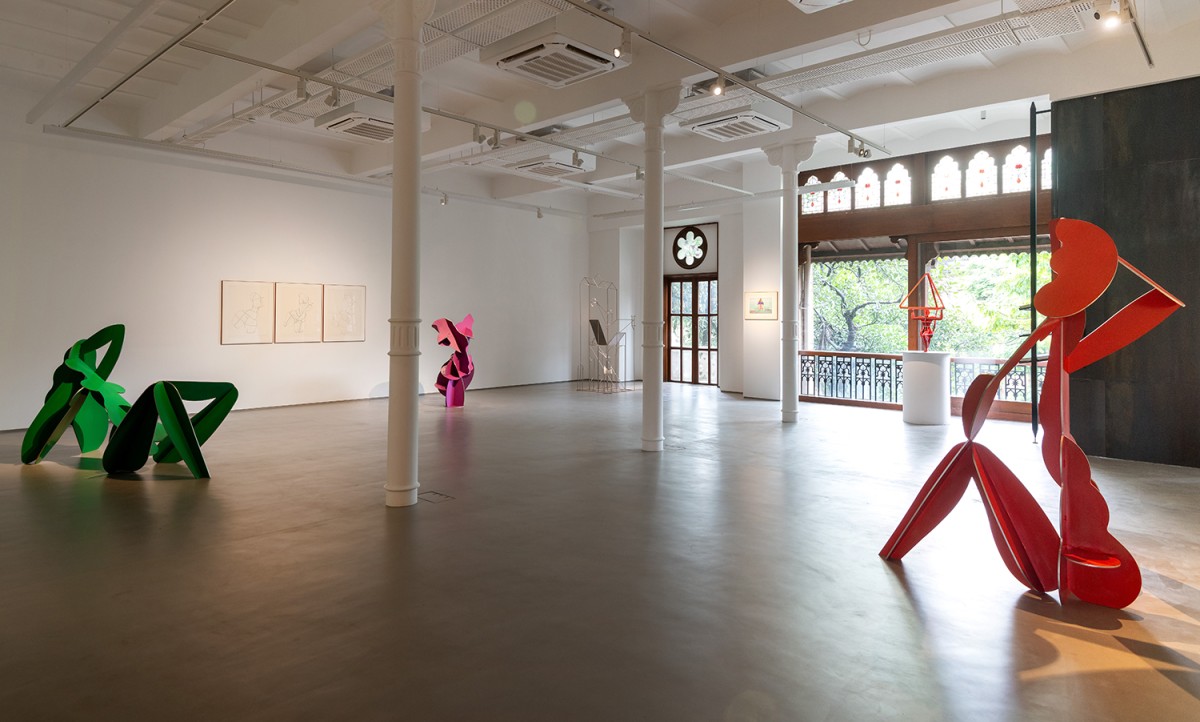
DHRUVA MISTRY: AT THE TURN OF FORM
September 23 - October 23 , 2023
Bodies stretch, twist, turn and multiply in Dhruva Mistry's sculptures. Drawn from past forms, these revisitations expand the potential of ideas with time. Divined through a process of editing, modifications and elimination, it offers clarity or evolution, and in some cases a mutation – a development, disintegration or a do- over. It isn't hard to miss how Mistry folds the tenets of abstraction, architecture and drawing into lustrous steel, a material that has become synonymous with his practice. These forms inspired from the prehistoric to Buddhism, Assyrian to Indian and from Cycladic to Cubism are used to generate visual unity, and sometimes cultural frictions. Mistry, who studied at MS University in Baroda, went on to learn sculpture at the Royal College of Art in London about the same time as the advent of New British Sculpture. The movement was to radically change the British art scene through bricolage, colour play, pop and kitsch, and new forms. It signaled a return to traditional methods, materials and figuration. Mistry had to find his own language, methods and devices in the wake of this moment. It was also a time of personal discovery - of travel and encountering the West. This distance from home perhaps also triggered an examination of Indian culture, its image and symbols; and produced a juxtaposition against images of the west and other cultures it had imported. These were not necessarily in harmony, but sometimes occurred and emerged from tension and disagreement. It is also important to note that Mistry is also practicing in the aftermath of Modernist Architecture's dominance in India – an affinity to clean lines that he will eventually absorb in his practice. Here is also where the treatment of bodies as architecture perhaps stems from.
Mistry's bodies are not biological, but architectural – they use the grid and the scaffold, tiers, partitions and angles. There is also a careful consideration of balance. It is practically possible to view into or enter the work in a way. The passage and blocking of light and wind is also employed to reorient and sometimes make strange. It asks us to break our comfortable viewing planes and find new and strange perspectives to peek and encounter. Perspectives from which it is no longer familiar, but anew.
A sheet of steel became his primary canvas, transforming his imagination to physical objects. What was chosen as a cost-effective metal, offered a newness – a cold shimmery surface – a clean slate. Mistry tests the limits of material and scale. How much before steel bends under pressure for example. It provided both scaffold and flesh, porosity and opacity with surprising delicateness. In ALoC: The Object, we see a city rise through stacks and intersecting lines. Roofs, minarets, domes and panels, present density without the usual use of volume – a trickery Mistry excels in. Colour then, both painted by hand and sprayed onto medium, becomes life-giving to cold, hard metal. It blends and cuts – unifying parts into a composite whole – like pieces of a puzzle coming together to form an image in the eye – a spatial diagram.
This is most evident in the digital drawings displayed alongside the sculptures that adopt an almost DIY, instruction manual aesthetic. Since 2001, Mistry has been working with AutoCad to facilitate laser cutting of the many shapes that form his sculptures. These parts are welded together to make a whole. They meticulously envision the sculptures in parts, and how they will fit and come together as one, whole. These two-dimensional views also provide an abstraction, rarely revealing the final study. It is devoid of layers and stays with a flat, singular interpretation of shape and space. Limbs, torsos and geometric shapes fill an earthen surface in Sower (2015-2023). In Reading Recline (2003-2023), bodies curve to from umbrellas and limbs are laid out, neatly filling the surface. It is important to note that these digital drawings are also how the machine will understand shapes when it cuts them out of steel sheets. This layout is also how the surface is maximized, to get the most out of material.
Mistry begins with prototypes, Maquettes. After working with several possibilities and variations, he slowly arrives to a form he wishes to develop on a large scale. This process, both time consuming and unpredictable, has defined his studio practice over the years. The object itself is content, so making is a process of instinct and surrender to materials – a play that eventually distills to a final form, at least for now. Sometimes, there is also working against the material – to reorient it, mutate it – to treat metal like paper, to fold and cut. How these sculptures respond to space, a scenography almost, that seeks intimacy and distance. This circumambulation of the monumental, both conceptual and of bodies around these forms, transform space to sanctum.
These figures, at rest, reclining, sometimes multi limbed, command attention – to be present in their presence. Luminously painted with big defined eyes, sometimes bald, and/or muscular – there is a deity-like presence. Each view is a new threshold, a fresh perspective. Little B, a Sirin-like bird-woman hybrid, stands upright. Sharp red claws clutch on to the ground. It holds its stare. To associate mythological/mythical references to Mistry's work needs us to stop at its iconography – he stays with the visible, the lines and contours of its body. He liberates it from the weight of historical meaning allowing us a fresh meeting. This is strongly and most directly visible in the torso sculptures, where muscle is merely the illusion of slender line work.
Mistry is never in haste, if an idea has to take form it will, naturally and instinctively. If it must remain as a mulling of the mind, it will and that's okay for him to. To evolve and become in time, with time and when its time becomes a way of practicing. There is also a permanent temporariness to what is made and what sees the light of day – maybe it must return to the mind or the studio to be recast, reinvented. The form, though born out of restlessness, is a thing of patience. Mistry is also interested in the encounter – of how and under what circumstances do audiences view his work. What is the tension that is generated between life and form? How do audiences find new ways to look at these sculptures?
Stemming from years of incubating and (re)making, In At the turn of form, Mistry lends new life to old apparitions, ones that have lingered or returned to stay awhile. It invites us to partake and position ourselves, to share space and reorient movement – to experience form in scale and in its shadow.
- Mario D'Souza
